Microsoft RoomAlive: Xbox + Kinect + Projection Mapping = Awesome Immersive Gaming
At a time when people around the world were busy discussing <a href="https://www.crazyengineers.com/threads/windows-10-overview-the-olds-the-new-new.76823">Windows 10 Overview: The Old's The New New</a>, some folks at Microsoft’s research wing were busy finalising a proof-of-concept technology that would transform any room into an Xbox game. The project titled RoomAlive is based on last year’s IlumiRoom project which created an interactive projection mapping surrounding a television screen. While the former project relied heavily on the TV screen, RoomAlive skips it all together. We shall discuss the RoomAlive concept in detail in the following paragraphs, starting with projection mapping.
Projection Mapping
Conventional projectors are normally used to project any video or PowerPoint presentation on to a flat surface. In projection mapping instead of focusing on a flat surface, projectors are programmed to direct light on to any 3D shape object turning them into an interactive display. Normally this would been a painstaking work for game developers who have to spend hours creating individual experiences for room of various sizes but the RoomAlive has a trick up its sleeve that makes projection mapping a one-size-fits-all technology.
Projector Depth-Camera Unit (procam)
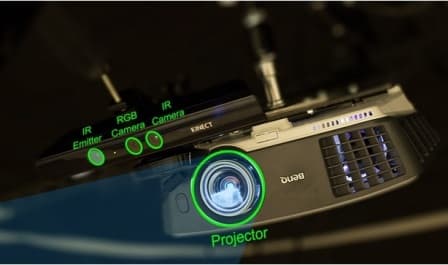
The creators of RoomAlive describe procam as the core building block. It consists of projector, Microsoft Kinect sensor and a computer. Using the tracking capabilities of a Kinect sensor, the procam is able to alter the content of the projection depending on the room size and player’s position. The procam is able to detect walls and floor and project content on to them depending on their size and colour. The procams also monitor the movement of head of the player to render a view-dependent projection. This is similar to the head tracking capabilities of the Amazon Fire Phone. While a single procam unit is enough for a simple room gaming experience, Microsoft recommends six of these to achieve the perfect RoomAlive experience.
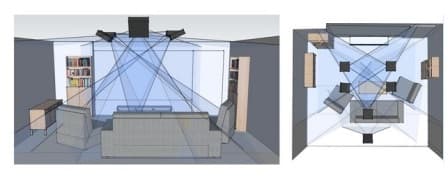
Operation
As soon as you set up projector depth-camera units in your room it maps the room and within a few minutes initialises the game. Players will then be able to touch, shoot, stomp, dodge and steer projected content from the game in their rooms. Old school gamers will be glad to know that you can still use your trusty Xbox wireless controller in these projected environments.
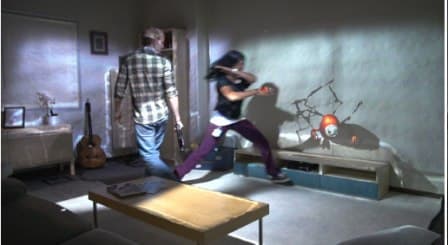

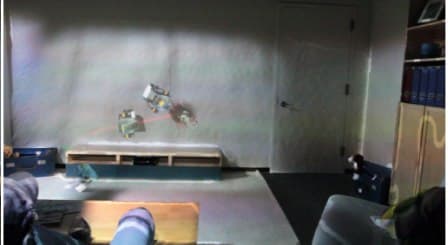
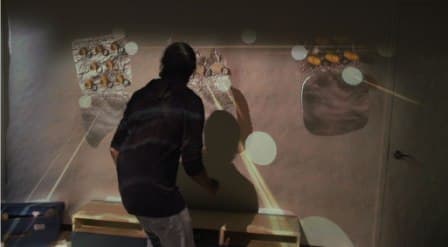
Our Opinion
Sure this technology sounds brilliant but the costs involved in installing such a unit in your house would be mind boggling. A good off-the-shelf projector costs nearly Rs. 1 lakh and putting six of them in your living room is not everybody’s cup of tea. Plus you have the costs of Kinect sensors and the games themselves. Game developers too will not be interested in this project as it is not a gaming platform for masses. The technology is still in a concept stage and it would take years before it is finalised for public use.
Source: <a href="https://projection-mapping.org/roomalive-uist/" target="_blank" rel="nofollow noopener noreferrer">RoomAlive: Magical Experiences Enabled by Scalable, Adaptive Projector Camera Units – Projection Mapping Central</a> via <a href="https://www.theverge.com/2014/10/5/6912979/microsoft-roomalive-research-projector-system" target="_blank" rel="nofollow noopener noreferrer">Microsoft’s ‘RoomAlive’ transforms any room into a giant Xbox game - The Verge</a>
Projection Mapping
Conventional projectors are normally used to project any video or PowerPoint presentation on to a flat surface. In projection mapping instead of focusing on a flat surface, projectors are programmed to direct light on to any 3D shape object turning them into an interactive display. Normally this would been a painstaking work for game developers who have to spend hours creating individual experiences for room of various sizes but the RoomAlive has a trick up its sleeve that makes projection mapping a one-size-fits-all technology.
Projector Depth-Camera Unit (procam)

The creators of RoomAlive describe procam as the core building block. It consists of projector, Microsoft Kinect sensor and a computer. Using the tracking capabilities of a Kinect sensor, the procam is able to alter the content of the projection depending on the room size and player’s position. The procam is able to detect walls and floor and project content on to them depending on their size and colour. The procams also monitor the movement of head of the player to render a view-dependent projection. This is similar to the head tracking capabilities of the Amazon Fire Phone. While a single procam unit is enough for a simple room gaming experience, Microsoft recommends six of these to achieve the perfect RoomAlive experience.

Operation
As soon as you set up projector depth-camera units in your room it maps the room and within a few minutes initialises the game. Players will then be able to touch, shoot, stomp, dodge and steer projected content from the game in their rooms. Old school gamers will be glad to know that you can still use your trusty Xbox wireless controller in these projected environments.




Our Opinion
Sure this technology sounds brilliant but the costs involved in installing such a unit in your house would be mind boggling. A good off-the-shelf projector costs nearly Rs. 1 lakh and putting six of them in your living room is not everybody’s cup of tea. Plus you have the costs of Kinect sensors and the games themselves. Game developers too will not be interested in this project as it is not a gaming platform for masses. The technology is still in a concept stage and it would take years before it is finalised for public use.
Source: <a href="https://projection-mapping.org/roomalive-uist/" target="_blank" rel="nofollow noopener noreferrer">RoomAlive: Magical Experiences Enabled by Scalable, Adaptive Projector Camera Units – Projection Mapping Central</a> via <a href="https://www.theverge.com/2014/10/5/6912979/microsoft-roomalive-research-projector-system" target="_blank" rel="nofollow noopener noreferrer">Microsoft’s ‘RoomAlive’ transforms any room into a giant Xbox game - The Verge</a>
0
